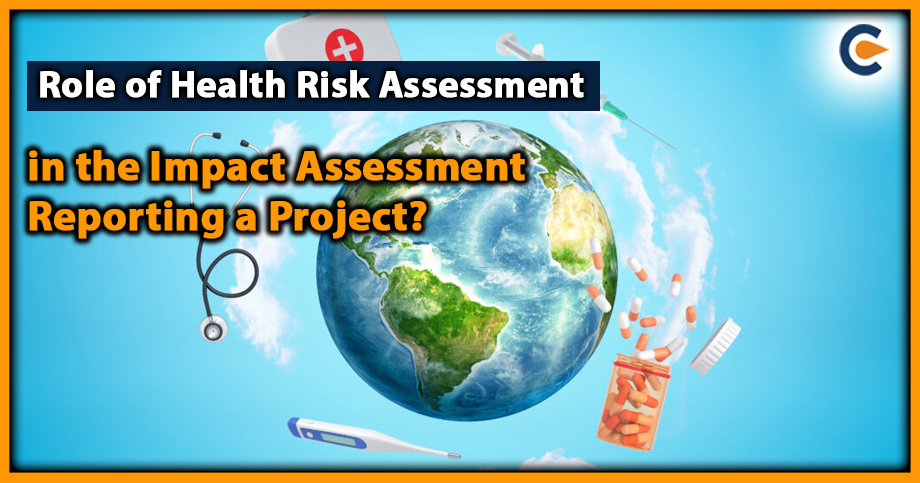A health risk assessment (HRA), is conducted to assesses an individual’s lifestyle factors and health risks in a specific set on conditions. Comprehensive HRAs are frequently used to evaluate all aspects of an individual’s well-being, including nutrition, fitness, stress, sleep, mental health, and biometric data. Healthcare marketing professionals use targeted HRAs focusing on specific medical conditions as part of their marketing and patient engagement strategies. In both use cases, an HRA includes:
- Question section
- Risk score
- Report with individualized feedback on areas of improvement
Methodology of Health Risk Assessment
HRA includes four steps, which begin with planning:
| Process | Description |
| Planning and Scoping | The EPA initiates the human risk assessment by collaborating with risk manager(s), risk assessor(s), and stakeholders to plan the overall approach. The team identifies risk management goals, natural resources of concern, scope and complexity of assessment, and decides on team member roles. |
| Hazard Identification | The risk assessor(s) evaluate whether a stressor can damage humans and/or ecological systems and in what conditions it may occur. |
| Dose-Response Assessment | The risk assessor(s) collect data to establish the quantitative correlation between exposure and consequences by examining the connection between the amount of exposure and the corresponding response. |
| Exposure Assessment | After identifying steps 1 and 2, the risk assessor(s) examine the frequency, timing, and levels of contact with the stressor to determine the potential exposure of humans and ecological systems to the stressor. |
| Risk Characterization | Risk characterization involves two major components – risk estimation and risk description. Risk estimation compares the exposure level of each stressor and plant or animal population, community, or ecosystem of concern, with data on expected effects. Risk description provides information on the expected harmful effects, relevant qualitative comparisons, and how uncertainties might affect the assessment. |
Questionnaire Format in Health Risk Assessment
An HRA consists of questions related to various areas, such as:
- Demographic information like age and gender.
- Past and present health conditions.
- Preventive screenings.
- Willingness and readiness to adopt lifestyle changes to enhance overall health.
- Lifestyle behaviours include physical activities, eating habits, and tobacco/alcohol consumption.
- Emotional health aspects such as stress levels, mood, and significant life events.
- Physical health factors like body weight, cholesterol levels, and blood pressure.
Relation between Health Risk Assessment and Social Impact Assessment
Social Impact Assessment (SIA) is a process that is used to evaluate the potential social impacts of a proposed project or development on the surrounding community. In some cases, SIA may also include a Health Risk Assessment (HRA) component to evaluate the potential health impacts of the proposed project on the community.
The HRA component of SIA typically involves assessing the potential health risks associated with the proposed project. This may include an evaluation of the possible exposure pathways for hazardous substances or conditions and evaluate the potential health effects of exposure to these hazards.
The HRA may also involve a review of the medical history of the community, an assessment of the current health status of the community, and an evaluation of the potential health effects of exposure to the proposed project on vulnerable populations, such as children, pregnant women, or the elderly.
Documents Required In Health Risk Assessment
Documents to be required are as follows:
- Detailed project report and project design documents
- Environmental Impact Assessment (EIA) report
- Soil quality and groundwater quality reports
- Topographical maps and contour maps of the site
- Geotechnical survey reports and slope stability analysis reports
- Meteorological data and air quality monitoring reports
- Information on the nature and quantity of hazardous substances used or generated by the project
- Detailed project report and project design documents
- Environmental Impact Assessment (EIA) report
- Soil quality and groundwater quality reports
- Topographical maps and contour maps of the site
- Geotechnical survey reports and slope stability analysis reports
- Meteorological data and air quality monitoring reports
- Information on the nature and quantity of hazardous substances used or generated by the project
- Detailed project report and project design documents
- Environmental Impact Assessment (EIA) report
- Soil quality and groundwater quality reports
- Topographical maps and contour maps of the site
- Geotechnical survey reports and slope stability analysis reports
- Meteorological data and air quality monitoring reports
- Information on the nature and quantity of hazardous substances used or generated by the project
Regulations Governing Health Risk Assessment Reporting
The regulations are as follows:
- The Environmental Impact Assessment (EIA) Notification, 2021: This notification under the Environment (Protection) Act, 1986[1], mandates that HRA be conducted as part of the EIA process for certain projects. The EIA process includes the identification of potential health risks associated with the project, as well as the development of appropriate mitigation measures to minimize these risks.
- The Factories Act, 1948: This legislation provides for the regulation of safety, health and welfare in industrial settings and includes provisions related to the identification and management of health risks associated with workplace activities.
- The Air Act, 1981: This act provides for the prevention, control, and reduction of air pollution and includes provisions related to the monitoring and assessment of air quality and associated health risks.
- The Water Act, 1974: This act provides for the prevention and control of water pollution and includes provisions related to the monitoring and assessing water quality and associated health risks.
- The Hazardous Waste (Management and Transboundary Movement) Rules, 2016: This legislation provides for the management of hazardous waste, including the identification and assessment of potential health risks associated with the handling, storage, and disposal of hazardous waste.
Mandatory Compliance Concerning Health Risk Assessment
In India, the Half-Yearly Compliance Report (HYCR) is a requirement under the Factories Act 1948, and it includes a Health Risk Assessment (HRA) as one of its components. The HRA is an essential tool that is used to identify and evaluate potential health risks to workers in the workplace.
A qualified occupational health physician or a certified industrial hygienist should conduct the HRA. The assessment should consider the nature of the work, the materials and substances used in the workplace, and the potential hazards associated with the work environment.
The HRA should include a review of workers’ medical history, an assessment of workers’ physical and mental health, and an evaluation of the potential health effects of exposure to hazardous substances or conditions in the workplace. The evaluation should also include recommendations for preventive measures and interventions to mitigate identified risks.
The HYCR, including the HRA, is a crucial document that helps ensure the safety and well-being of workers in the workplace. It is essential for employers to take this requirement seriously and to ensure that the assessments are conducted regularly and thoroughly to identify and address any potential health risks.
Conclusion
Any Risk Assessment involves collecting and analysing data related to the nature and extent of the hazard, the characteristics of the exposed population, and the potential health effects of the exposure. A project proponent must undertake Health Risk Assessment associated with a project, activity in the half yearly report submission. The report must systematically evaluates hazards, exposures, and health effects and aims to identify appropriate measures to minimize or eliminate risks to human health. The process may also involve modelling and simulation techniques to predict the magnitude and likelihood of adverse health effects. The results of the HRA can be used to inform the development of appropriate mitigation measures and risk management strategies to protect human health.
Read Our Article: How To Do An Assessment Of The Environmental Impacts Of A Project?











